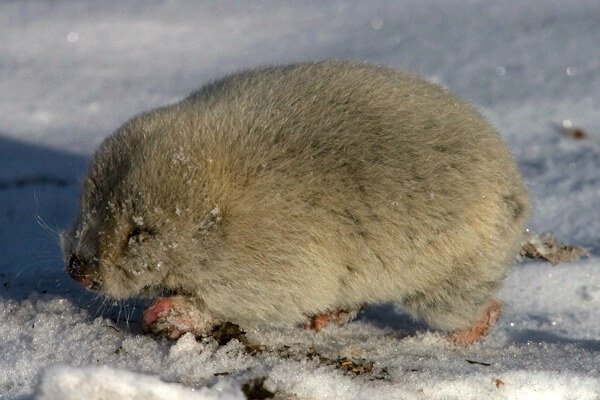
Imagine a tiny, furry architect, building tunnels beneath the surface. That’s the zokor for you. Native to the grasslands and forests of Central Asia, these creatures are more than just adorable; they contribute significantly to soil health and plant life above ground. So why should we care about a small rodent that spends most of its life hidden away? Let me explain.
What is a Zokor?
Zokors belong to the family of rodents called **myospalacinae**. They’re often mistaken for moles, but they have some distinct features. With their robust bodies, short legs, and long, hairless tails, they’re adapted to life underground. Most zokors measure about 8 to 14 inches long, depending on the species.
These animals have powerful claws made for digging and are primarily found in countries like Mongolia and China. Living in deep burrows, they create extensive tunnel systems that help aerate the soil and allow water to penetrate deeper. This natural occurring soil aeration is one of the reasons they’re crucial to their habitat.
The Zokor as a Soil Engineer
You might be wondering what exactly makes zokors soil engineers. Well, here’s the thing: their digging habits enhance soil structure. By tunneling underground, they change the soil’s physical properties.
When zokors burrow, they move around large amounts of soil, mixing organic matter with mineral-rich layers. This process creates an environment ideal for plants to thrive. As they dig, they also create air pockets in the soil, which helps with water drainage.
Without these little diggers, soil could become compacted, making it hard for plants to grow. Think of zokors as nature’s little gardeners, constantly working to keep the soil healthy and vibrant.
The Zokor’s Feeding Habits
Zokors primarily feed on plant roots, tubers, and other underground parts of plants. Their diet is quite unique, as they have a knack for finding and consuming various plant species. In a way, you could call them “plant foragers” of the underground.
Because they eat so many roots, zokors influence which plants grow in their habitat. This selective feeding can help maintain a balance between different plant species, preventing any one type from dominating the landscape.
Interestingly, their feeding behavior can also be beneficial to the other animals in the ecosystem. By eating the roots of certain plants, they allow space for others to grow, which can be a food source for various herbivores and insects.
Zokors and Their Predators
Like many creatures, zokors have their fair share of predators. Birds of prey, snakes, and even some larger mammals see these rodents as a tasty snack. This predator-prey dynamic is vital for maintaining balance in the ecosystem.
When zokors are plentiful, they become a crucial food source for these predators. Their population sizes often fluctuate, which can impact the animals that rely on them. If zokors decrease, those predators might struggle to find food, showing just how interconnected everything is in nature.
This relationship also highlights the importance of ecosystems being healthy and diverse. When the balance is disrupted, it can lead to issues that affect not only the zokors but also the balance of the entire ecosystem.
The Impact of Zokors on Ecosystem Health
Beyond just soil engineering and serving as prey, zokors play a part in nutrient cycling. As they eat and then excrete plant material, they contribute to the nutrient cycle in a way that benefits the entire ecosystem.
Their burrowing helps to bring nutrients from deeper soil layers closer to the surface, making them available to plants. This natural process improves soil fertility, promoting a healthier environment for a variety of life forms.
In essence, zokors act as a bridge between the underground world and what we see above. The health of the ecosystem relies on these small, hardworking rodents to connect various life forms and maintain balance.
Conservation and the Zokor
With all this in mind, it’s clear that zokors play a vital role in their ecosystems. However, habitat loss and environmental changes pose threats to their populations. Agricultural expansion and urban development can destroy their natural homes, leading to declining numbers.
Conservation efforts are essential to safeguard these unique creatures and their habitats. Protecting grasslands and implementing sustainable land practices can help ensure that zokors continue to thrive. Remember, conserving one species can affect many others in the ecosystem.
It’s not just about saving the zokors; it’s about preserving the intricate web of life they support. When you think about it, conserving their habitat is an investment in the health of the entire ecosystem.
In wrapping this up, the **zokor’s role in its ecosystem** is both fascinating and essential. These little underground diggers contribute to soil health, plant diversity, and the overall balance of nature. By understanding their importance, we can appreciate how every part of an ecosystem plays a role—even the tiniest creatures.
So, the next time you think about wildlife, don’t overlook the zokor. They may not be the flashiest animals out there, but they certainly have a big impact on the world around us. Protecting their habitats means ensuring a healthier planet for future generations. Let’s not forget the little guys—after all, every creature has its part to play in the grand scheme of life.
